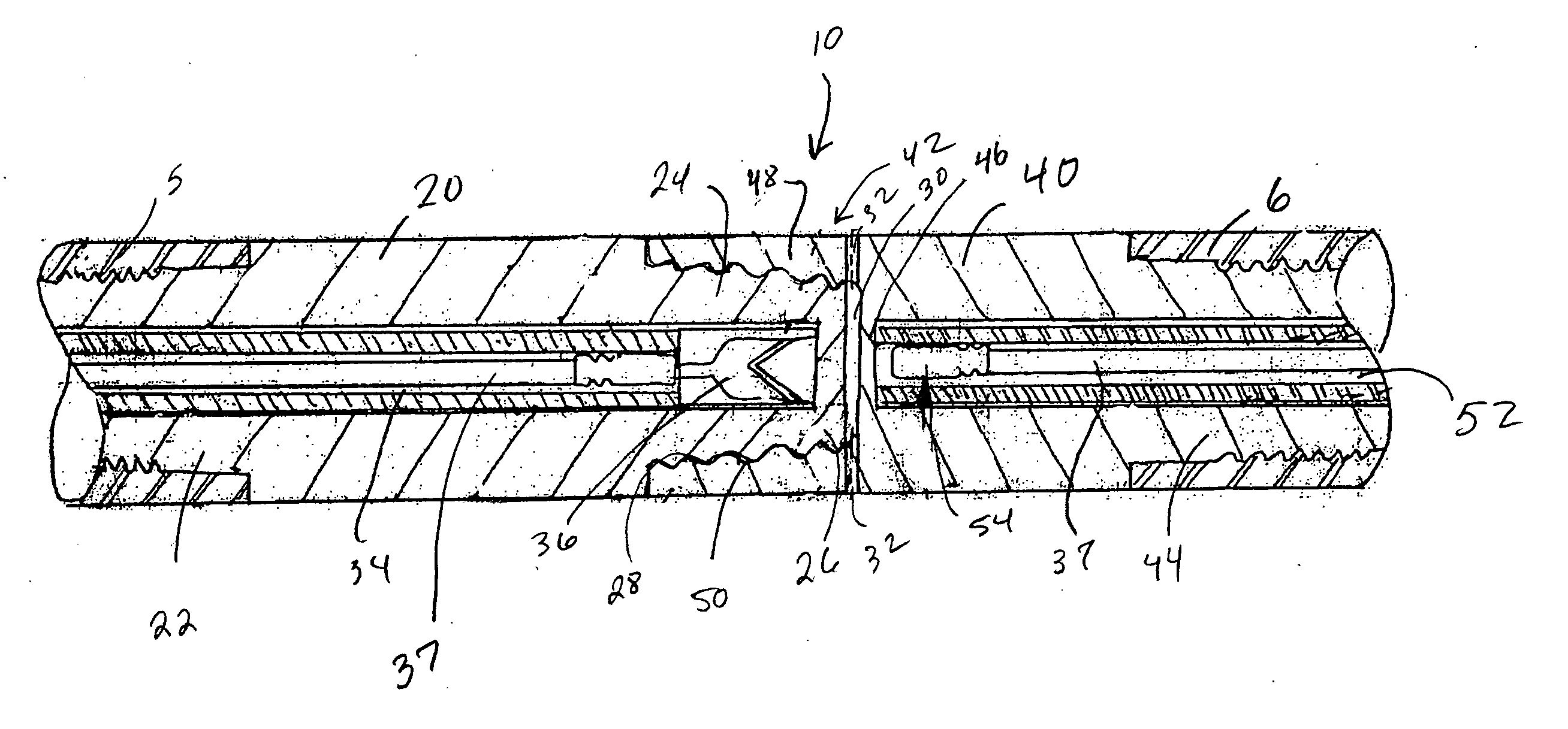Connector for perforating gun tandem
a perforating gun and tandem technology, applied in the field of oil and gas production, can solve the problems of requiring manual attendants, premature detonation of explosives within the connector, and current connection devices that require manual attendants, and achieve the effect of facilitating automated engagemen
- Summary
- Abstract
- Description
- Claims
- Application Information
AI Technical Summary
Benefits of technology
Problems solved by technology
Method used
Image
Examples
Embodiment Construction
[0019] With reference to the drawings herein, a cross sectional view of one embodiment of a perforating gun connector 10 of the present invention is illustrated in FIG. 1. Here, the perforating gun connector 10 comprises a first section 20 and a second section 40 connected together. As shown in FIG. 1, the top end 22 of the first section 20 is threaded to provide a manner of attaching the first section 20 to a first perforating gun 5, where the first perforating gun 5 has corresponding threads formed on its outer radial surface. Many alternatives exist however for attaching the first section 20 to the first perforating gun 5, such as dogs, latch keys, collets, threaded fasteners such as bolts, screws, or lugs, and any other known or later developed attachment device. Likewise, the second section 40 is threaded on its lower end 44 as shown in FIG. 1 for attachment to a second perforating gun 6. Furthermore, the attachment alternatives that exist for the first section 20, exist for th...
PUM
| Property | Measurement | Unit |
|---|---|---|
| explosive charge | aaaaa | aaaaa |
| charge | aaaaa | aaaaa |
| velocity | aaaaa | aaaaa |
Abstract
Description
Claims
Application Information
 Login to View More
Login to View More - R&D
- Intellectual Property
- Life Sciences
- Materials
- Tech Scout
- Unparalleled Data Quality
- Higher Quality Content
- 60% Fewer Hallucinations
Browse by: Latest US Patents, China's latest patents, Technical Efficacy Thesaurus, Application Domain, Technology Topic, Popular Technical Reports.
© 2025 PatSnap. All rights reserved.Legal|Privacy policy|Modern Slavery Act Transparency Statement|Sitemap|About US| Contact US: help@patsnap.com


